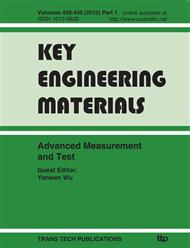p.1349
p.1355
p.1361
p.1367
p.1373
p.1379
p.1384
p.1388
p.1393
Impact of Different Turbulence Models on Air Pollutant Flow and Distribution
Abstract:
The aim of this study is to provide a simulation of air pollutant in a street canyon and investigates the impact of different turbulence models on the flow structure and air pollutant dispersion. Three studied k-ε turbulence models are evaluated to determine the most optimum turbulence model and the most suitable parameters of inlet boundary velocity and turbulent kinetic energy for simulating the pollutant dispersion in the present street canyon. The calculated data of the numerical model are then validated by comparing the extensive experimental database obtained from Kastner-Klein and Plate. Compared with the measured results, it can be concluded that modified RNG model with the inlet velocity profile and turbulent kinetic energy and turbulent dissipation rate provides the best calculated results, while standard and RNG k-ε turbulence models under-predict the pollutant concentrations.
Info:
Periodical:
Pages:
1373-1378
Citation:
Online since:
June 2010
Authors:
Price:
Сopyright:
© 2010 Trans Tech Publications Ltd. All Rights Reserved
Share:
Citation:


